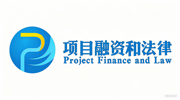Africa eyes small modular reactors to plug power gaps

With global nuclear capacity surging, African nations are looking to SMRs not just for access but for energy autonomy, industrialisation, and grid resilience.
By Bonface Orucho
African countries are exploring small modular reactors (SMRs) to deliver clean, reliable energy to where it’s needed most.
According to Robert Lisinge, a technology, innovation, and connectivity expert, Africa’s SMR ambitions can be achieved through “synchronised planning at regional and national levels.”
“There is a need to conceptualise and potentially develop regional nuclear projects that involve perhaps multiple countries.”
The continent, they agreed, is no longer just exploring nuclear options; it is laying the groundwork for a new generation of energy solutions designed for Africa’s infrastructure realities.
“Across the continent today, we have 15 percent of generation, 40 GW of power, that cannot be delivered simply because of infrastructure issues, curtailment, and grids not being available, sometimes for 800 to 1,000 hours per year,” said Yohannes Hailu, Economic Affairs Officer at the UN Economic Commission for Africa.
Built in factories and shipped to sites, they can be installed close to the point of use, mining sites, industrial parks, or off-grid communities, cutting the need for extensive transmission infrastructure.
With more than 600 million Africans still living in the dark and demand rising from sectors like mining and manufacturing, the interest in SMRs is gaining speed.
Ghana, for example, has signed a framework agreement with U.S.-based Regnum Technology Group and NuScale Power to deploy up to 12 NuScale VOYGR-12 SMR modules. Each module will initially produce 50 MW, with plans to scale up to 77 MW, delivering nearly 924 MW when fully deployed.
Beyond generation capacity, Ghana is building a foundation to become a regional hub for nuclear training and localisation. With U.S. government collaboration, the country has launched the region’s first NuScale Energy Exploration Centre (E2 Centre) in Accra—a state-of-the-art facility that simulates full-scale nuclear operations and includes a welding certification lab.
Officials aim to build up to 1,000 MW of nuclear capacity by 2034. According to Ghana’s Nuclear Power Institute, the country is also in the process of negotiating a “123 Agreement” with the U.S. for long-term civilian nuclear cooperation and trade.
In South Africa, home to the continent’s only commercial nuclear facility, Koeberg, the focus has shifted from large-scale expansion to a locally designed high-temperature SMR known as the HTMR-100.
Rwanda is also positioning itself as a launchpad for experimental nuclear technology in East Africa. The government has signed agreements with U.S.-based NANO Nuclear Energy and the Canada-Germany firm Dual Fluid to pilot microreactors in the 2 to 10 megawatt range.
These units could provide off-grid communities or specialised industries with reliable power, serving as test cases for broader deployment.
Even countries without active deployment plans are laying the foundation.
Nigeria is modernising its regulatory frameworks and has joined the U.S.-backed FIRST program, which helps countries prepare for advanced nuclear technologies.
The geopolitical landscape is also rapidly evolving as global powers race to gain a foothold in Africa’s nuclear future.
Egypt’s nuclear ambitions have received a major boost with the El-Dabaa plant reaching a key milestone in July. A Russia-backed project, El-Dabaa saw the installation of a 480-tonne core catcher, an essential passive safety system designed to prevent reactor meltdown.
Rosatom, the Russian state energy corporation, is leading the build, but Egypt has also signed nuclear energy cooperation agreements with China and South Korea, as it seeks to diversify partnerships and strengthen its technological base.
The United States, meanwhile, is accelerating engagement, as seen during the U.S.-Africa Nuclear Energy Summit. Held in Nairobi in 2024, the event saw agreements signed with Ghana and Kenya, including plans for reactor development, regulatory support, and nuclear workforce training.
China, too, is pushing aggressively. At the 2024 Forum on China-Africa Cooperation (FOCAC), China and Nigeria inked a deal to expand nuclear energy cooperation. BloombergNEF reports that China approved 11 new domestic reactor projects in 2024 alone and plans to become the world’s top nuclear generator by 2030.
Projections from the Nuclear Business Platform (NBP) suggest Africa could generate as much as 15,000 MW of nuclear energy by 2035, led by Ghana, Uganda, Kenya, and Rwanda.
Despite efforts, financing remains a key challenge. With costs ranging from US$2 to US$3 million per megawatt, a single 100-megawatt SMR could cost over US$200 million.
However, institutions like the African Development Bank and the West African Development Bank are beginning to study SMR financing mechanisms. Regional power pools and public-private partnerships are also being considered.
Industrial parks, mining zones, and remote towns are emerging as early targets. SMRs could also support desalination projects, mini-grids, and even green hydrogen development.
The consensus in Kigali was unmistakable. Small and micro modular reactors represent a transformative opportunity for the continent. But seizing it will require coordinated investment in policy, finance, and infrastructure.






